I like the idea of designing robots, putting together builds for a particular purpose or with particular capabilities in mind. As I’ve stated many times before, my first influence for Cogmind was the original BattleTech board game, where my friends and I wouldn’t just take stock mechs, but designed our own based on the rules, selecting the right combo of weapons, heat sinks, armor, and special tech.
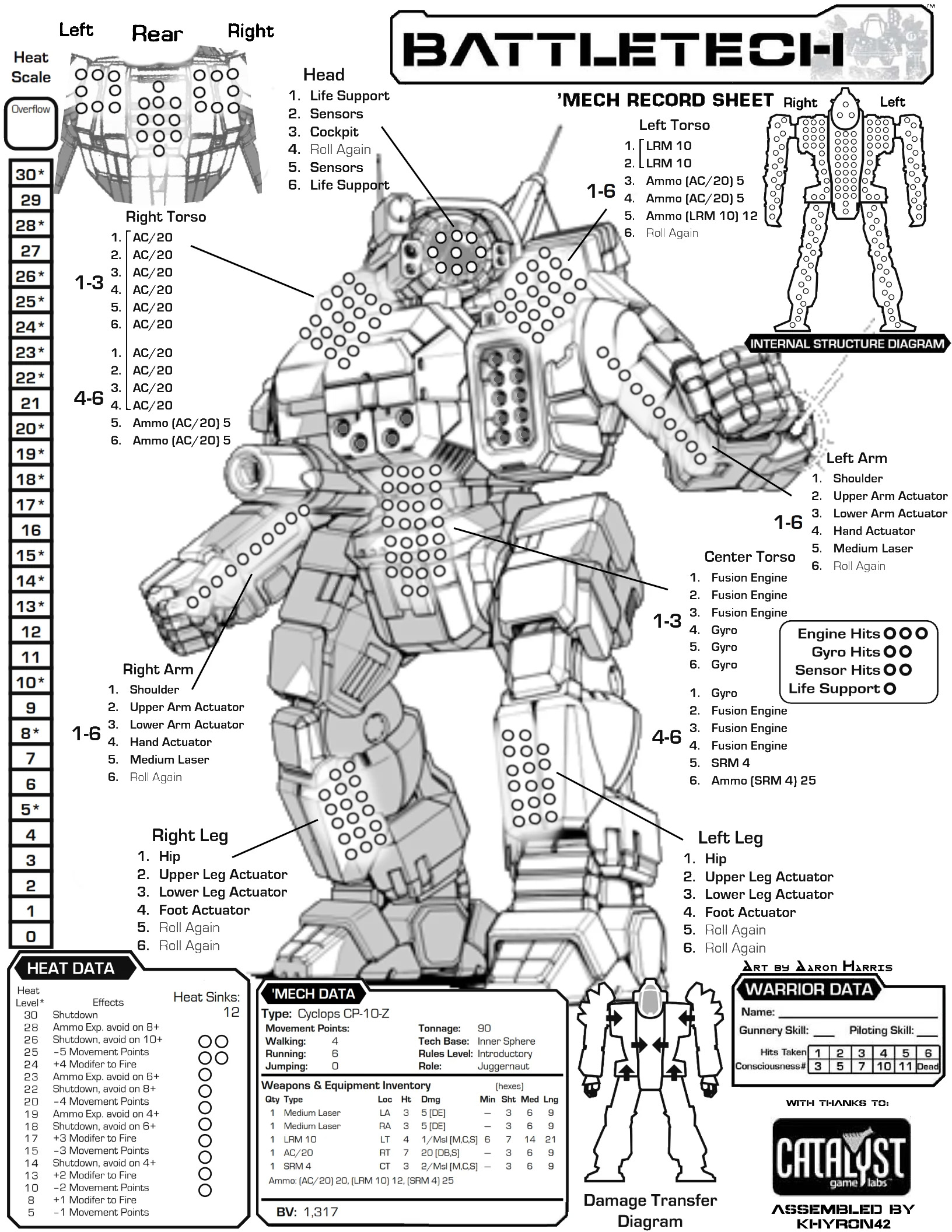
A BattleTech loadout sheet. Sadly all my old BT books and records are at a relative’s house right now, otherwise I might go through them and share a thing or two :)
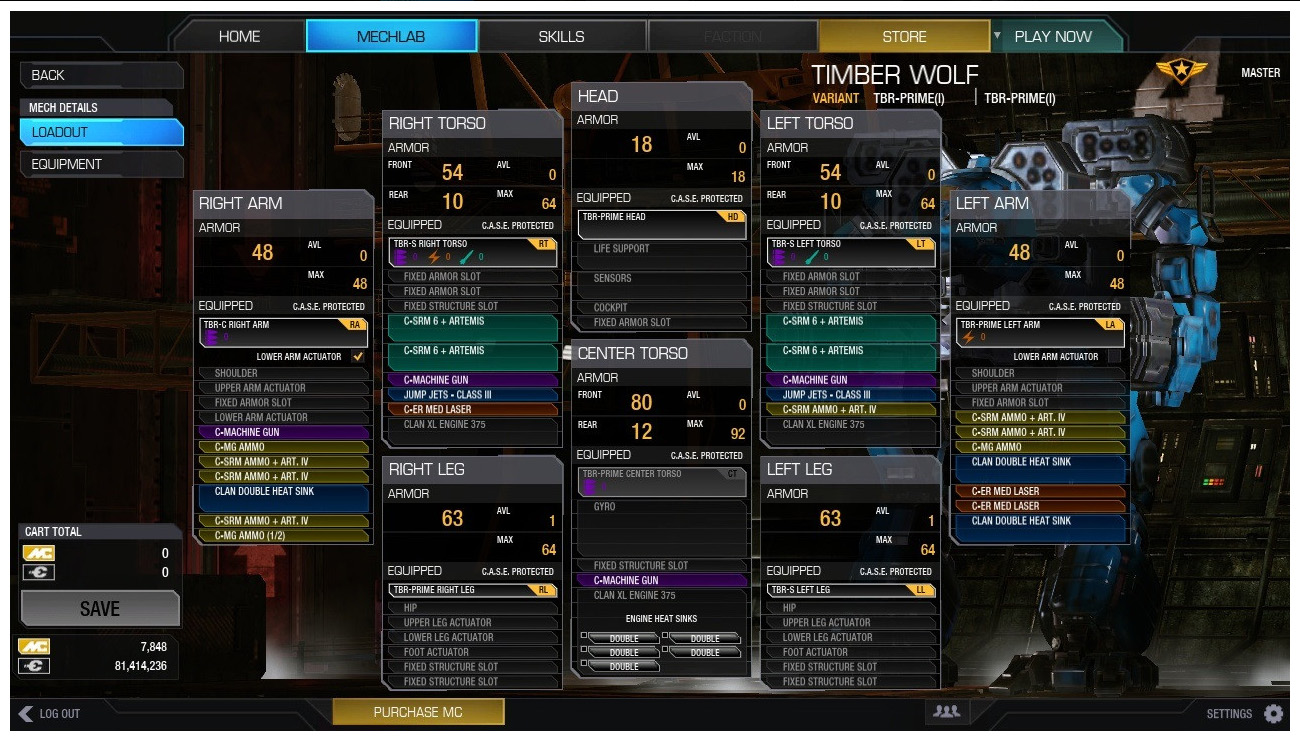
A Mechwarrior Online build. I also played all the early PC BT games, and later MW spinoffs and related games, all the way up to MWO (though had to stop some years into it because for some reason my new computer kept glitching out on it, but it’s probably for the best :P).
Even more than being a tactical roguelike, Cogmind is a strategic game about engaging in a dynamic form of this process, repeatedly replacing and upgrading components as you go. And based on the current situation, or plans for what’s to come, you can even pivot your whole build at one point or another.
So if bot-building is a main feature, and players of Cogmind therefore most likely enjoy bot-building, then perhaps there are other areas we could apply this activity? What about designing robots other than yourself?
Actually Player 2 mode sort of has this quality to it, since even if your opinionated ally is technically responsible for putting themselves together, they can only do so using parts they have access to, which like in your case are acquired entirely from their surroundings. If you can control what they get their hands on (e.g. by destroying or stealing whatever you don’t want them to have), you can indirectly control what they are more likely to build. And when they need parts to complete or improve their build, you can also drop stuff nearby and see if they’re interested in it. It’s not quite reliably building your own robot from scratch, but you can influence the outcome, so there’s that.
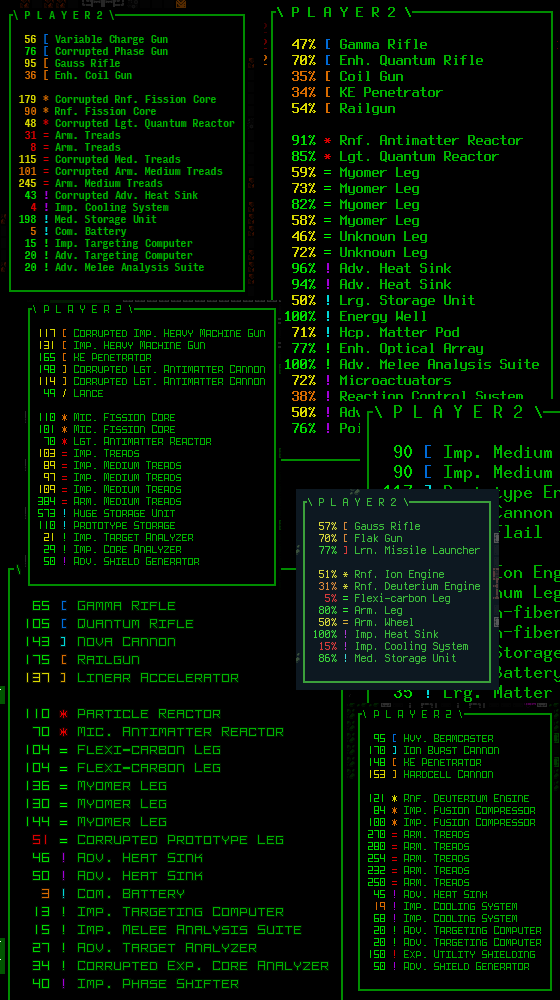
Player 2 builds shared by various players over the years.
Some players have been known to take Player 2 sculpting to the next level and even try to carve specific parts off their friend (chop ’em up!) in order to force them to use alternatives, either from their inventory or provided by Cogmind.
But yeah, clearly still not the same thing :P
How else could we add robot construction? Well I don’t really want* to go as far as creating a full-blown in-game design system with a dedicated interactive UI like you might find in some sort of RTS or games with a vehicle design element. That’d be fun, but overboard.
*Oh no, on the heels of my previous post about special modes and their experimental test bed nature, I realize that yes I do actually want to try that, and some forms of this could make for a very interesting event xD
It’s got to be simpler than that… How about simply dropping a bunch of parts on the ground and telling them to be a robot?
The Botcube
Say hello to the Botcube, and the new friend it will create for you, or more specifically the new friend you will create with it.
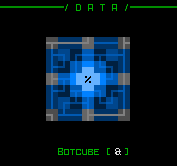
It’s a cube. It makes a bot.
Usage is indeed quite simple: Drop the Botcube on the ground and interact with it in the normal way (‘>’ or left-click) and it will start the creation process, turning itself into a brand new robot. Hopefully by that time you’ve prepared a collection of suitable parts for it to use, lying around on the ground within range (or maybe are just dropping Botcube in a pile of post-battle wreckage to see what happens?).
Every couple turns it will suck up a new part and merge with it, until either all potential slots are full or there are no more compatible parts nearby. Then beep boop your new friend will self-activate.
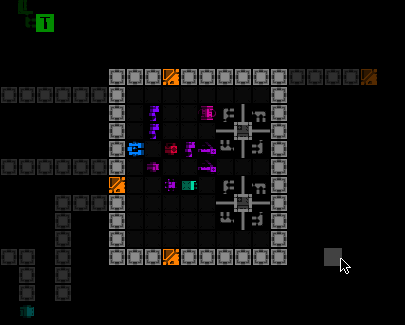
Creating a Botcube mutant. In this test recording, a robot created by the Botcube is represented with a Mutant tile, but will have their own once released.
Your history log will conveniently record the feat.

The history log also includes some basic information about what kind of Botcube friend you created.
Don’t forget to inspect your formidable new ally!
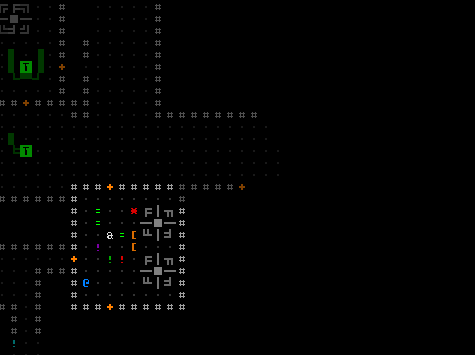
Inspecting the Mutated Botcube’s final stats. Its core attributes are static, though as with most robots the majority of their capabilities are defined by their loadout.
Implementation of this feature was somewhat quicker than it otherwise would have been because I already had a template for the process of building a bot from nearby parts, originally used in Abominations, one of the advantages I wrote about in the previous post.
Complementary QoL
As a player what do you need most to facilitate using this sort of tech? At least some way to tell which parts the Botcube is compatible with. The answer is most, but there are a few exceptions, generally including things that AI-controlled bots can’t really use, or aren’t suitable for certain types of allies from an architectural standpoint.
In order to help out with that, while standing on the Botcube (the only position from which to activate it) all nearby compatible parts will intermittently flash. Anything not flashing will be ignored.
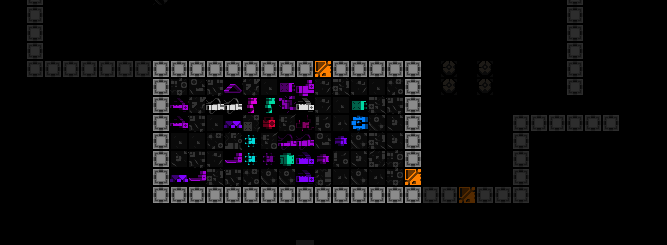
Botcube compatibility highlighting demo.
This also coincidentally makes it obvious which items are within range to be utilized--double QoL!
Ancient History and Distant Future
In implementing this feature, I’m reminded of one of the times Cogmind was written about in Rock Paper Shotgun years ago, where the author assumed you would also be “building your own allies” in the game. Anyone who’s played in the years since will know that’s not really much of a thing aside from fabricating bots based on existing designs, at least not in the sense implied by the original assumption (designing them as well), but I guess we can have some of that now :)
I bet there will be a range of new theorycrafting discussions to go along with this mechanic as well. Really looking forward to what people do with this one.
On that note, one area of concern here is that Cogmind’s allies are notoriously disposable, by design. You put effort into collecting a few parts you want to see merged into one bot, or even *gasp* take time to plan one with care, only to have it gunned down by the next squad. Yeah that would suck.
We can’t exactly make them invincible, either, but to at least protect against rapid death they’re given high EM resistance, a decent amount of core integrity, and low-ish exposure. With your level of control you can of course also choose to armor them for better coverage, or improve other stats you think will help them survive, or aid you in your situation. They’re essentially akin to a customized Hero of Zion.
There are also more possibilities for this tech, which I had actually revisited in my notes a couple years back to specify that it would be appropriate as a piece of primary content within yet another new map that might happen further down the line. But since I do think this mechanic will be fun to play with, and there’s no guarantee that other map will actually happen, I think this is a good opportunity to at least provide a taste of it!
I can also use this opportunity to hint at its origins for the lore.
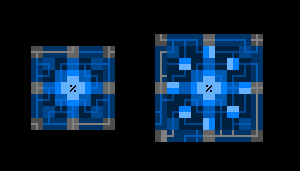
:D
This is the fourth post in a series on new item mechanics. I won’t be covering anywhere near everything (or even the coolest mechanics because I don’t like to spoil much :P), but some of these also offer a chance for relevant discussion of the bigger picture:

